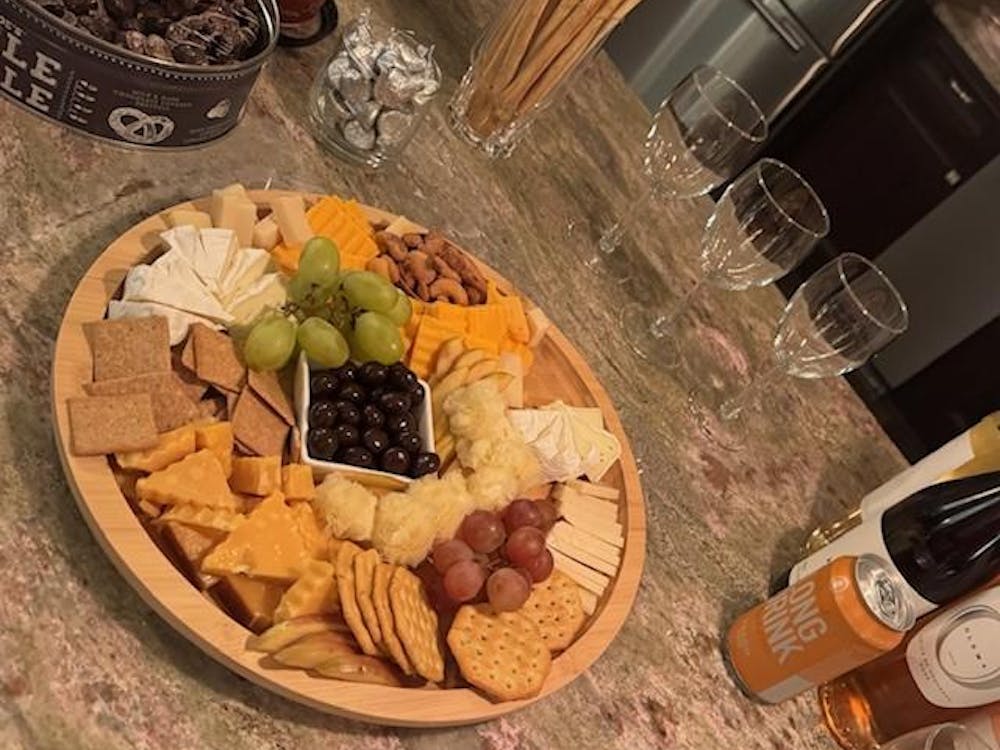From South Africa to Charlottesville Chemistry Prof. Graeme Gerrans hails from South Africa. He began his undergraduate studies at Rhodes University in Grahamstown, South Africa, concentrating on chemistry as well as geology. He continued to Cambridge for his doctorate, returning to South Africa after completing his studies.
"I worked in industry for a short while," he said, noting that he worked for a company that manufactured enzymes.
After a few years, Gerrans began teaching at the University of Witwatersrand in Johannesburg, South Africa, teaching graduate and undergraduate chemistry as well as later teaching graduate organic chemistry and chemistry education.
After teaching at the University of Witwatersrand for 30 years, Gerrans came to the University. In 1990 he taught general chemistry to first years for six months at the University but was not offered a teaching position until he had retired from teaching in South Africa.
"I was on vacation in America in 1998 and by that time I had retired, and I was invited to come here to teach for two years," he said, noting that when the two years were up in 2000, he was reappointed.
"They just kept reappointing me, and I've never left," he said.
Gerran's wife, Sue Gerrans, is also an active member of the University community, working at the Women's Center.
The University's own CIA man
Though he had plans to become a professor, History Prof. Gerald Haines had no idea his career path would first lead him to work at the CIA. He majored in diplomatic history and minored in Latin American history at Wayne State University in Detroit, then went on to the graduate program at the University of Wisconsin.
"I knew what I wanted to do was to teach at the university level, but there were not a whole lot of jobs out there at the time, so I decided to go to D.C.," Haines said.
He became a foreign affairs specialist with the National Archives.
"We were the first civilians to look at FBI files, and we were able to examine the Nixon library materials," Haines said. "It was all very exciting."
Eventually, Haines received an even more thrilling offer. "I had never dreamed of this, but someone asked if I would be interested in working in intelligence for national security," Haines said.
He accepted the offer and spent six years as an intelligence historian before being asked to work for the CIA in a similar position.
"I was asked to set up a program at the reconnaissance office" working with satellites for three to four years, he said, adding that he then served as chief historian of the CIA history program for six years.
"They have a program at the CIA where they take a select number of senior officers and place them in major universities, and my choices were Johns Hopkins and the University of Virginia," Haines said.
After spending his assigned two years at the University, Haines said he retired from the CIA and was asked by the University to stay on as a faculty member. He has been with the University now for six years.
La inspiración del español
Spanish Prof. David Gies' plans to become an academic did not begin until well into his undergraduate career.
He attended Pennsylvania State University because "it seemingly had lots of offerings and lots of fun," he said. "It was just a state school and a good place to go."
During his first few years as an undergraduate student, Gies did not have a set interest in any one subject.
"I was a 17-year-old boy and I didn't know what I was doing, so I studied what they told me to study," he said.
Romance was the catalyst for Gies' career -- it led him to his first Spanish course.
"I had a girlfriend who was studying Spanish and she said, 'Why don't you try Spanish?' and I took it and I kind of liked it," he said.
By the time he had reached his junior year at Penn State, Spanish had become his major. It was not until Gies was able to study in Spain for a semester that he truly became inspired by the Spanish culture; he found Spain electrifying.
"Even the parts that I didn't like, I loved," he said. "Everything was new and fresh and exciting, and I had to figure it all out and I found it inspiring."
He then planned to spend more time in Spain over the summer, when he and a friend traveled across Europe.
"We went to London, then to Copenhagen, then Vienna, and then I thought to myself, 'Spain was so much more fun and cheaper,' and then we went back to Spain and ended up spending the rest of the summer there," he said.
It was after this second visit that Gies decided he wanted to teach Spanish. He attended the University of Pittsburgh for his graduate studies, which enhanced his love for Spanish culture.
"In graduate school, my brain caught on fire," he said.
He then received a job offer while still working on his doctorate, an unheard-of occurrence at the time. With the encouragement of his wife, he took the job teaching at St. Bonaventure University in New York. After eight years there, he received a phone call from Javier Herrero, a distinguished Spanish professor who worked at the University, asking him to teach at the University, where he has remained ever since.






